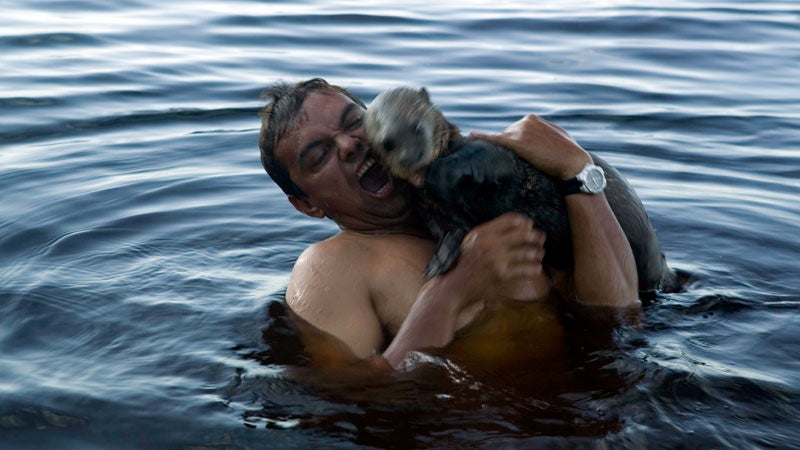Sea otters are not typically dangerous to humans. These creatures are generally non-aggressive and shy.
Sea otters, enchanting marine mammals found along the coasts of the northern Pacific Ocean, are a favorite of wildlife enthusiasts and environmentalists. Known for their playful nature and distinctive use of tools to open shellfish, these intelligent animals are an essential part of the marine ecosystem.
They help to maintain the balance of kelp forests by controlling populations of sea urchins and other prey. Sea otters have a dense fur, the thickest of any mammal, which keeps them warm in cold waters. Their presence boosts local ecotourism, as many flock to see their endearing behaviors. Although they normally pose no threat to human safety, it’s important to respect their space and observe them from a distance, as they are wild animals with natural instincts and behaviors.
Natural Habitat And Social Structure
Sea otters are a keystone species within their marine ecosystems. The diversity among sea otter populations is evident in their varied diets and foraging habits, which relate closely to their specific regional habitats. Coastal regions along the North Pacific Rim, from California to Japan, encompass their geographical range.
Each habitat hosts an array of prey and ecological conditions that influence the distribution and behaviors of these marine mammals. Research shows distinct variations even between otters dwelling in southern and northern California, demonstrating the complexity of their environmental adaptations. Sea otters exhibit intriguing social dynamics, typically forming groups known as rafts. These can range from a few individuals to hundreds, with gender and age often dictating the composition. Social ties are maintained through activities such as grooming and playing, which are central to the life of a sea otter.
Feeding Habits And Prey
Sea otters are known for their diverse and rich diet, primarily consisting of marine creatures. They typically prey on a variety of shellfish, including abalone, mussels, clams, sea urchins, and crabs. Their diet also consists of some species of fish, although these are less common.
Their remarkably advanced hunting techniques are a testament to their intelligence. Sea otters are one of the few mammalian species known to use tools to retrieve and open their food. They often use rocks to crack open the hard shells of their prey, showcasing an extraordinary level of problem-solving ability.
As they are at the top of the food chain in their habitat, sea otters have a significant impact on their local ecosystems. Through their predation on sea urchins, they help maintain the health of kelp forests, which are crucial to marine biodiversity. Without the predatory presence of sea otters, these ecosystems could be overrun by sea urchins, leading to the decline of kelp forests and the species that depend on them.
Cases Of Otter-human Interactions
Historical accounts of encounters between sea otters and humans are scattered throughout maritime folklore. These anecdotes often highlight the innate curiosity of sea otters, but they sometimes also reflect unexpected aggression in certain situations. It’s important to acknowledge that while sea otters are generally non-threatening to humans, there have been rare instances of defensive behavior, particularly when pups are involved or when they are surprised or cornered.
Turning to the statistics on aggressive incidents, comprehensive data is somewhat scarce due to the infrequency of such events. Nevertheless, a careful review of available reports indicates that most interactions are benign. Still, it’s advised that humans maintain a respectful distance to minimize the potential risk of a harmful encounter. Organizations monitoring wildlife interactions consistently advocate for awareness of otter behavior to ensure coexistence remains peaceful.
Understanding Sea Otter Aggression
Sea Otters are known for their playful demeanor, but they can exhibit territorial behavior, particularly during mating season. Males aggressively defend their territories to maintain access to females and resources. Although confrontations are primarily with other otters, humans can inadvertently become targets if they encroach upon these territories.
Protective mothers display fierce aggressiveness when they sense a threat to their pups. This behavior is instinctive and parallels that of many wildlife species that go to great lengths to ensure the survival of their offspring. The intensity of a sea otter’s protective nature should not be underestimated by beachgoers or nearby observers.
Understanding these factors is crucial; they are innate responses to environmental stimuli. Comparisons with other marine mammals reveal that sea otters are not unique in having aggressive tendencies. However, their behaviors can seem more pronounced due to their frequent interactions with humans in coastal areas.
Safety Measures For Human-otter Coexistence
Observing sea otters requires a respectful distance to ensure the safety of both humans and otters. Always maintain a minimum distance of at least 50 meters to avoid stress or disturbance to these sensitive creatures. For swimmers, kayakers, and divers, it’s essential to stay vigilant and avoid areas where otters are known to frequent. Sea otters can be territorial; thus, direct encounters should be avoided.
Educational efforts, such as informative signs and community workshops, play a critical role in minimizing risks. These programs stress the importance of not feeding otters, which can alter their natural behavior and lead to aggressive actions. Always be aware of local wildlife guidelines and regulations to ensure a harmonious and safe coexistence with these fascinating marine mammals.

Credit: www.outsideonline.com
Conservation Efforts And Implications
Sea otters play a crucial role in maintaining the health of marine ecosystems by being apex predators. They help control the population of sea urchins and other invertebrates that can decimate kelp forest habitats if left unchecked. Kelp forests are vital as they provide food, shelter, and breeding grounds for a myriad of marine life.
Conservation status and programs are vital in ensuring the survival of sea otters. They are currently protected under various laws, such as the Marine Mammal Protection Act, and several organizations are dedicated to their recovery and preservation.
Finding the right balance between human activities and otter habitats is crucial. Efforts include establishing protected areas, reducing pollutants entering the ocean, and educating the public about the importance of sea otters to biodiversity and marine health. These measures aim to minimize human-induced threats and disturbances to these delicate creatures and their environments.
Human Impact And Response Strategies
Sea otters, known for their playful demeanor, can experience severe setbacks due to pollution and climate change. These environmental pressures lead to habitat loss, food scarcity, and compromised health, which may inadvertently increase otter-related incidents with humans as otters seek new territories.
In response to these challenges, specialized veterinary care is crucial for the recovery of injured sea otters. Dedicated centers provide medical treatment, rehabilitation, and, if possible, release back into their natural habitat. Successful recuperation hinges on the swift action of veterinary teams skilled in dealing with the unique needs of sea otters.
Policy and community involvement are pivotal in driving change and protecting otter populations. Through legislation, conservation efforts, and increasing public awareness, communities are encouraged to participate in creating a safer environment for these aquatic mammals. Active involvement can range from supporting clean water initiatives to advocating for policies that mitigate climate change impacts.
Frequently Asked Questions For Are Sea Otters Dangerous
Are Sea Otters Typically Aggressive?
Sea otters are generally not aggressive towards humans but can become defensive if they feel threatened or if their pups are in danger. Like all wild animals, they have natural instincts to protect themselves.
Can Sea Otters Pose A Threat To People?
While sea otters are not known to pose a significant threat to people, incidents can occur if otters are provoked or feel their territory is encroached. It’s always advisable to observe them from a safe distance.
What Precautions Should Swimmers Take Around Sea Otters?
Swimmers should maintain a respectful distance from sea otters and avoid areas where they are known to inhabit to prevent unexpected encounters. It is also important not to feed or attempt to touch them.
Do Sea Otters Carry Diseases Harmful To Humans?
Sea otters can carry bacteria and parasites, such as Giardia or Toxoplasma, which can be harmful to humans. It’s important to avoid contact with otters and to wash hands thoroughly if contact occurs.
Conclusion
Sea otters, with their playful demeanor, may seem innocuous. Yet, like all wild creatures, they deserve respect and caution. Understanding their behaviors is key for safe human-otter interactions. Ensuring these magnificent animals can thrive without fear is a responsibility we share.
Remember, admiration from a distance is the safest approach for everyone involved.

